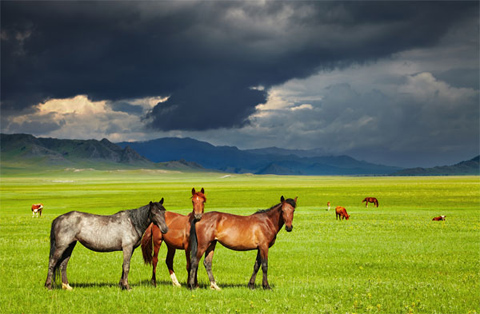
I wrote recently about preparing for wild fires and here’s another good article about hurricane preparation.
Bottom line: get out of the area early, before there are formal evacuation warnings.
_______________________________________________________________________________________
From The Horse website.
With the hurricane season upon us, it is important that horse owners ready themselves in advance for evacuation and other recommended tasks related to hurricane preparedness. The Louisiana State Animal Response Team (LSART) and the Equine Health Studies Program at the Louisiana State University School of Veterinary Medicine released some tips for horse owners in hurricane-prone areas May 23.
Before The Storm
-Be sure your horse is current regarding vaccinations for tetanus and the encephalitis viruses (Eastern, Western, and West Nile).
-Network a “plan” with the horse or farm animal-owning neighbors in your community (get to know your neighbors, plan a meeting, talk through different scenarios, and identify the local resources for dealing with disaster situations) and be prepared to help one another.
-Know your parish emergency managers (e.g., Sheriff, Animal Control). They are in charge during a disaster.
-Be sure that your horse has two forms of identification somewhere on his body: (1) Permanent identification such as a microchip, tattoo, or brand; and (2) Luggage-type tag secured to the tail and halter (be sure to use a leather halter for break-away purposes). Fetlock tags are useful and can be acquired on-line or from a local farm supply store or you can use a paint stick or non-toxic spray paint. Be sure to place your name, address, and phone number (a phone number for someone out of state is best in the event of local phone outages) legibly on the tags.
-Store the record for the microchip number (typically the Coggins form) in an accessible location. It’s also recommended to have a second copy of this information with a family member or friend in another location (i.e., out of state) but where it can be easily accessible.
-Prepare a waterproof emergency animal care kit with all the items you normally use, including medications, salves or ointments, vetwrap, bandages, tape, etc. Place the kit in a safe place where you can easily access it after a storm.
Evacuation
-If you plan to evacuate in the event of a storm, have a destination and route(s) mapped out well in advance. It is important to evacuate your horses a sufficient distance from the coast.
-Locate any large animal shelters in your state well in advance of an emergency; January to March would be good months to prepare this plan.
-Try to leave a minimum of 72 hours before the arrival of the storm. The worst thing that can happen to you is to get stuck in traffic with a trailer full of horses and a hurricane approaching. Provide your neighbors with your evacuation contact information.
Weathering The Storm
-The choice of keeping your horse in a barn or an open field is up to you. Use common sense, taking into consideration barn structure, trees, power lines, condition of surrounding properties, and the likelihood of the property and structure to flood. Horses on farms subject to storm surge or flash flooding should be turned out so they don’t become trapped or drown.
-Remove all items from the barn aisle and walls, and store them in a safe place.
-Have at least a two- to three-week supply of hay (wrapped in plastic or a waterproof tarp) and feed (stored in plastic water-tight containers). Place these supplies in the highest (out of reach of flood waters) and driest area possible.
-Fill clean plastic garbage cans with water, secure the tops, and place them in the barn for use after the storm.
-Have an emergency barn kit containing a chain saw and fuel, hammer(s), saw, nails, screws, and fencing materials. Place this kit in a secure area before the storm hits so that it is easily accessible after the storm.
-Be sure to have an ample supply of flashlights and batteries and other non-perishable items.
-Listen to local radio stations in your area. If Internet access is available, access state-run websites that contain accurate status information (i.e., State Police, State University, State Dept. of Agriculture), and take all cautions/warning seriously and act accordingly.
After The Storm
-Start early to clean up your property and remove all debris that might have been tossed around by storm and hurricane force winds. Be careful of downed power lines that might be “live” and represent a danger to people and animals.
Visit the Louisiana State Animal Response Team website for more detailed information regarding horse hurricane preparations and other emergency and health-related information.
